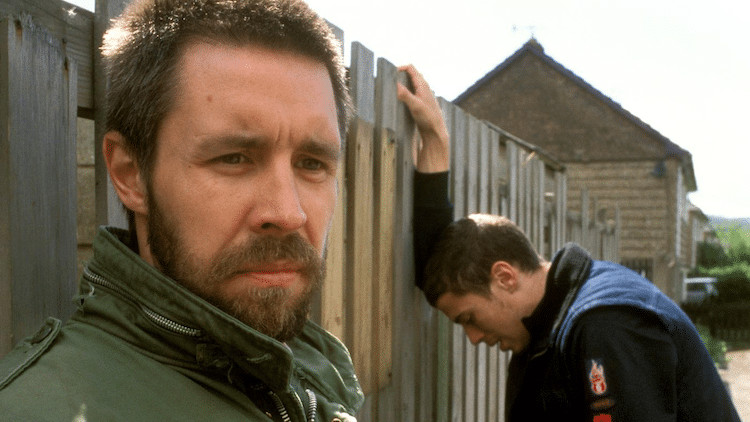
The revenge film, in its fundamental form, has a simple narrative structure and one that often has three distinct acts. Regularly beginning with a base act of violence, our protagonist will undergo a life-changing, traumatic event like that seen at the start of Paul Verhoeven’s Elle (2016. After this event the protagonist will often need time to come to terms with what happened or even rehabilitate and retrain as seen in Quentin Tarantino’s Kill Bill: Volume 1 (2003) where Uma Thurman’s The Bride utters the famous words “wiggle your big toe.” This would often be where the protagonist decides how to enact the revenge, The Bride choosing to return to her Samurai blade and vying to murder those that left her for dead. Naturally, the final act regularly sees the protagonist successfully undertake vengeance and often with a big violent and action-packed ending sequence like those seen in John Wick (2014) or Taken (2008).
By using this general structure, some revenge films play out like journey films, too. This is epitomised in films like The Revenant (2015) or The Nightingale (2019) whose lead characters traverse harsh and expansive terrain in order to enact their revenge. These examples substitute the rehabilitation stage for a physical journey where the protagonists overcome things as harsh or dangerous as those they are chasing. A quick, impulsive moment of revenge, too, like that seen in Thelma & Louise (1991), could also spur a cross-country journey where geographical distance becomes symbolic of detaching oneself from the traumatic event as opposed to facing it.
The revenge film is also one of self discovery, most explicitly epitomised by Park Chan-wook’s Oldboy (2003) whose Shakespearean narrative revolves around its lead character finding a way to reconnect with his lost past. This self discovery could also lead to a psychological journey as seen in films like Christopher Nolan’s Memento (2000), complicating the simple revenge structure with the use of short-term memory loss. Memento also cleverly uses separate timelines as to drip feed information concerning the opening traumatic event, slowly building upon our understanding of Leonard’s (Guy Pearce) monomania towards a man named Teddy.
Other revenge films like Death Wish (1974) or Straw Dogs (1971), whose characters get lost in the red mist of vengeance, explore the morality behind revenge as virtuous characters end up straying towards a hateful violence. Much like John Wick, Clint Eastwood’s aged assassin, William Munny, in Unforgiven (1992) is forced out of retirement in order to get revenge over the brutal murder of his friend and partner. By viewing the narrative through Eastwood’s perspective, here, Eastwood is positioned as the ‘good guy’ despite being an infamous outlaw and serial killer while Gene Hackman’s harsh but effective sheriff, Little Bill Daggett, is positioned as the ‘bad guy’. The very idea of revenge, then, ends up blurring the lines between good and bad and complicates this binary.
As seen, here, the revenge film can cross genre boundaries, too, with the western being a principle genre that is regularly interested in revenge – perhaps due to the western’s frequent treatment of outlaws who take justice into their own hands. But this idea of enacting justice by oneself is also found in horror films like Stray Dogs which turns its gaze towards rural England as the backdrop to explore morality. Fantasy cinema like that of The Princess Bride (1987) could also be seen as a revenge film, of sorts, as characters again embark on journey’s to right past wrongs and regain some sense of self.
So while the revenge film could be easily understood through a simple narrative structure, at the heart of each, whether it be an exploitation flick, a psychological thriller, or genre masterpiece, there is a layered journey of self discovery. Before you embark on a journey of revenge, dig two graves.
10. Prevenge (Alice Lowe, 2016)

In terms of what is morally good or bad it would be easy to shift the blame onto something else and after losing her husband during a dodgy cliffside accident, Alice Lowe’s Ruth blames her murderous spree on her unborn baby. While heavily pregnant, Ruth is motivated to enact revenge on those tangentially connected to her husband’s death, driven by the voice of her baby as if possessed from within “like a hostile takeover.” A mix of dark humour, as seen before in the Alice Lowe-written, Ben Wheatley-directed Sightseers (2012), and slasher-like horror reminiscent of a Dario Argento movie, Prevenge takes the generic horror-revenge narrative and adds a sharp, piercing edge.
Prevenge – written, directed, and starring the British indie actress, Alice Lowe – has an air of authenticity, too, despite its amplified violence and supernatural narrative. Made while Lowe was actually pregnant and shot in a fortnight shortly before the real birth, there is definitely an urgency underlying the film which heightens the hectic and impulsive actions of our lead character. Set down the dreary lanes and bland office blocks of south Wales, locations regularly associated with realist cinema, Prevenge manages to spruce the scenes with giallo-style colour while Lowe’s pregnant physique adds a physical weight to the film, here acting like a ticking time bomb on more levels than one. A funny, unique, and stylishly composed directorial debut from a filmmaker who makes wild cinema feel all the more, eerily, real.
9. Tetsuo: The Iron Man (Shinya Tsukamoto, 1989)
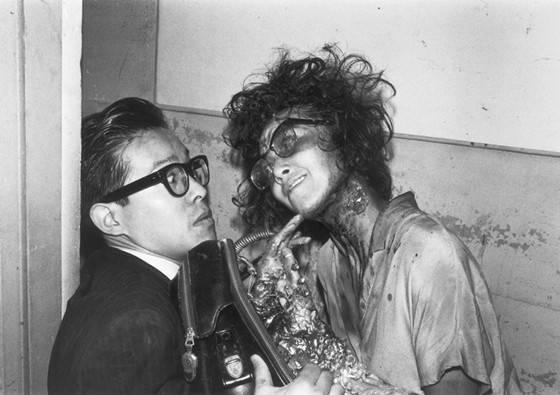
A different example of the revenge film can be found in Tsukamoto’s Tetsuo: The Iron Man as our perspective shifts from the victim to the perpetrator very suddenly early in the film. The film begins with a metal fetishist (played by Shinya Tsukamoto himself) who, in his bizarre, Pi-esque (1998) Tokyo hideout, cuts open his thigh and thrusts a metal rod into the wound in his leg, causing a maggot infection on his body. In a fearful rage he runs out onto the Tokyo streets and is run over by a salaryman (Tomorowo Taguchi) and his girlfriend (Kei Fujiwara) who flippantly dispose of the body and continue with their lives.
Our perspective is now with the salaryman as his face and body undergoes a metamorphosis into a heap of metal while his mind drifts between dilapidated reality and demented daydream as he embarks on a furious murder spree, culminating in the death of his girlfriend. Ultimately, the more the salaryman is overrun by metal the more the metal fetishist starts to reveal himself as the architect of the titular Iron Man, the salaryman’s physical dilapidation being at the hands of this supernatural ghost. The fetishist eventually confronts the Iron Man and easily overpowers him, showing him a post-apocalyptic vision of a New World where the Earth is consumed by metal.
Despite being made over an 18-month period, the film was made on a shoestring budget and shot primarily in Tsukamoto’s own apartment while the cast and crew lived on the set (many eventually abandoning the film when the shoot got too strenuous). This low-budget and DIY aesthetic adds to Tsukamoto’s stark visual style where cyberpunk meets Cronenbergian body horror, depicting Tokyo more like a dirty necropolis than a glimmering, high-rise laden metropolis. It is a bizarre revenge film but one that has since rightfully garnered a cult status and has had equally crazy sequels too.
8. An Actor’s Revenge (Kon Ichikawa, 1963)
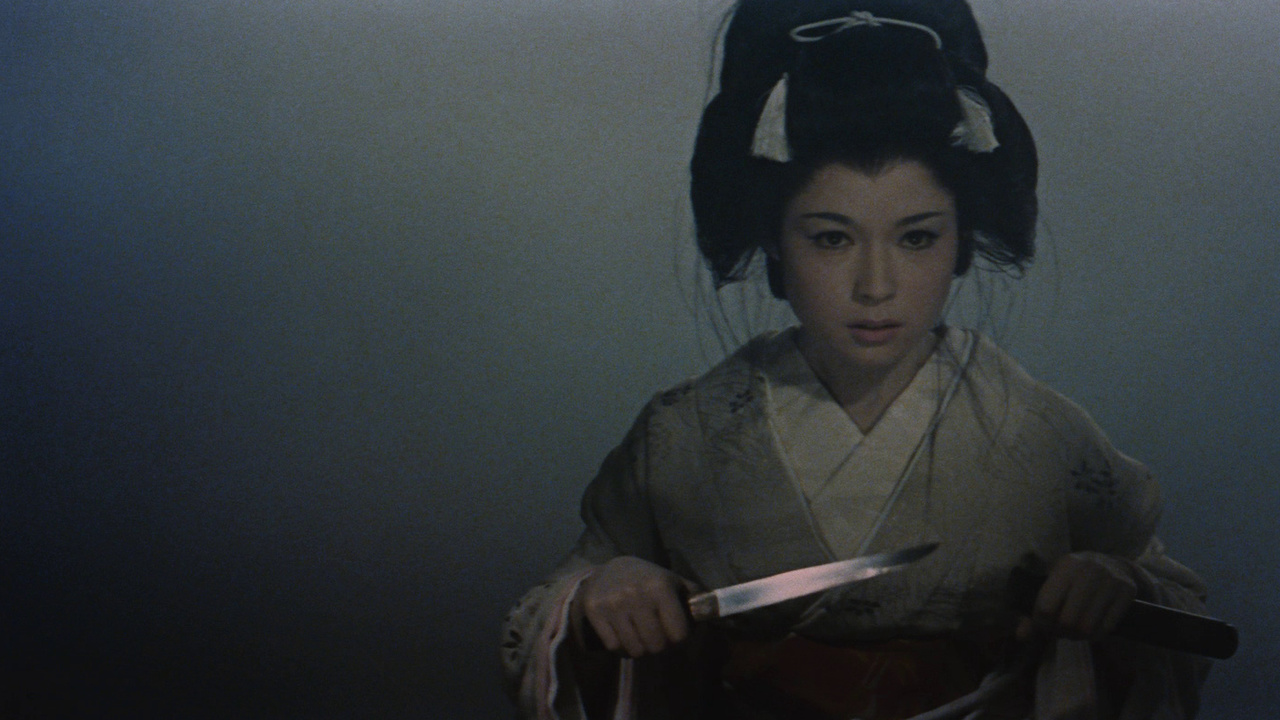
An Actor’s Revenge opens on a kabuki stage as an onnagata (a male actor who plays female roles) performs for the first time in Edo, Japan. In the audience he – Yukitaro (Kazuo Hasegawa) who uses the stage name Yukinojo – spies the three corrupt men who were responsible for his parent’s insanity and subsequent suicide 20 years previous. Here he vows to avenge his parents’ deaths by seducing one of his enemies’ daughters and then murdering the men.
While the film opens in a theatre, it never really leaves this setting as the rest of the film embodies theatrical qualities. Crucially, Yukinojo is always in costume – a convention for onnagata during the mid 1800s – and goes about his day constantly playing his woman character. The scenes, too, have a sense of artificiality as the sets are meticulously designed, even so that a great expansive field or river has an air of claustrophobia to it that is heightened by Kon Ichikawa’s amazing use of light and darkness. The action is also coolly and humorously observed by two master thieves who comment on Yukinojo’s journey of vengeance, almost acting like onstage narrators.
At the centre of the film, though, is the brilliantly androgynous performance by Kazuo Hasegawa who reprises the role he played 30 years earlier. A colourful and shapeshifting performance that seamlessly drifts between acting to actuality so much so that it feels like the play at the beginning never finishes.
7. Winchester ’73 (Anthony Mann, 1950)
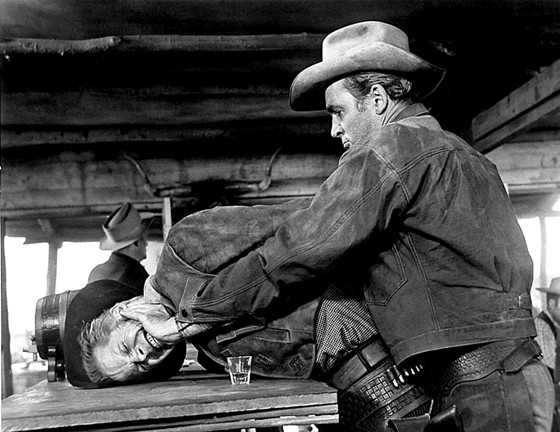
Winchester ’73 was the first of five western collaborations between Anthony Mann and James Stewart, ultimately inspiring Stewart’s acting revival that saw him shift from the upstanding characters seen in Mr. Smith Goes to Washington (1939) or It’s a Wonderful Life (1946) to the more morally ambiguous roles of Mann’s westerns or Hitchcock’s psycho-thrillers.
Much like Stewart’s twisted monomania seen in Hitchcock’s Rear Window (1954) or Vertigo (1958), here Stewart’s sharpshooting gunslinger, Lin McAdam, is resolute on seeking revenge for the murder of his father. The fugitive, Dutch Henry Brown (played menacingly by Stephen McNally), is almost like a doppelganger to Lin, epitomised in the opening scene where each contest for a prized Winchester during a shooting competition. Lin wins though it is Dutch who runs off with the weapon.
Lin’s hunt for Dutch is paralleled by the journey of the rifle as it passes from one owner to another, ultimately a reminder of Dutch’s constant presence in Lin’s head. The rifle also diverts the typical journey story into smaller episodes that follow those who are temporarily in possession of it, offering us brief insights into Lin’s good but also violent characteristics. This meandering journey becomes emblematic of the story’s moral complexity, ultimately coming to a head when Lin finally confronts Dutch and it is revealed that they are brothers.
Dutch, and by extension the rifle, are prime symbols of self discovery within a revenge narrative, then, as Dutch’s death becomes the only means for Lin to prove himself worthy of his father’s name. Here, the rifle prop becomes a physical metaphor for revenge, at first being stolen and then only reclaimed once the revenge is successfully completed.
6. Dead Man’s Shoes (Shane Meadows, 2004)
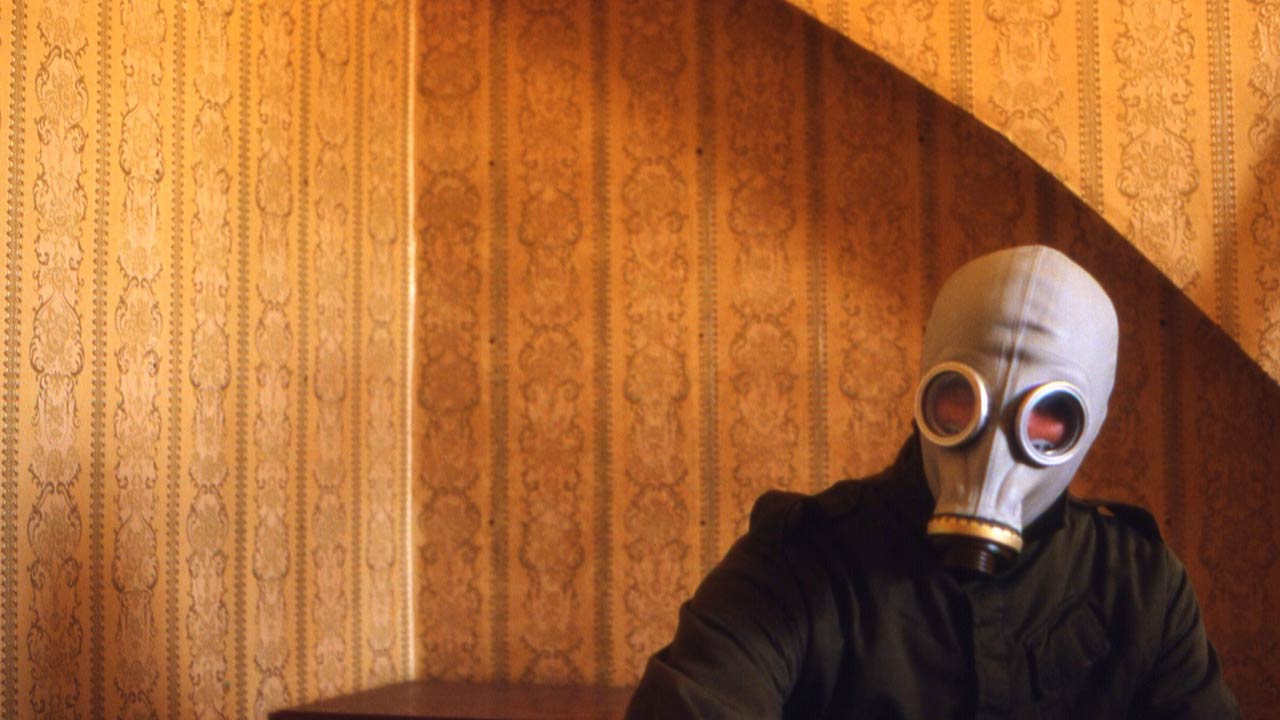
While Shane Meadows has come to prominence with his brilliant social realist drama This Is England (2006) and the subsequent spin-off series, Dead Man’s Shoes cemented him as an adept writer and craftsmen of simple but effective narratives. Despite being shot down the grimy cul-de-sacs and local pubs of a provincial Derbyshire town, Dead Man’s Shoes’ corrosive story stands this film apart from other realist films of the time, possibly acting as a precursor to the dark comedies that were to come from filmmakers like Ben Wheatley.
This tick list of revenge murders follows Paddy Considine’s Richard as he returns to his hometown to enact revenge on a group of petty thugs that tormented his disabled younger brother (played brilliantly by Toby Kebbell). Richard’s axe-wielding, gasmask wearing anti-hero is a terrifying and daunting image, occasionally and briefly pushing this film into horror-like territories. Despite the sometimes hard-to-stomach plot points, Richard’s relationship with his brother and his journey for redemption is endearing and heart-warming, owing a debt to Michael Caine’s hard-faced performance as Jack in Get Carter (1971) and acting as the perfect backdrop for a gruesome revenge story.